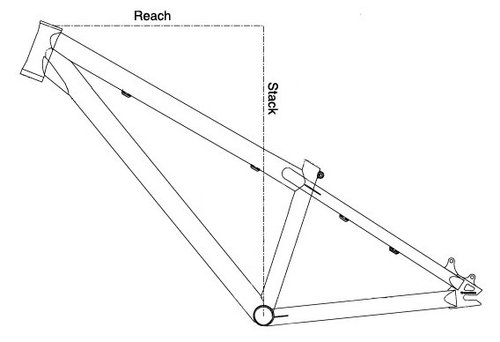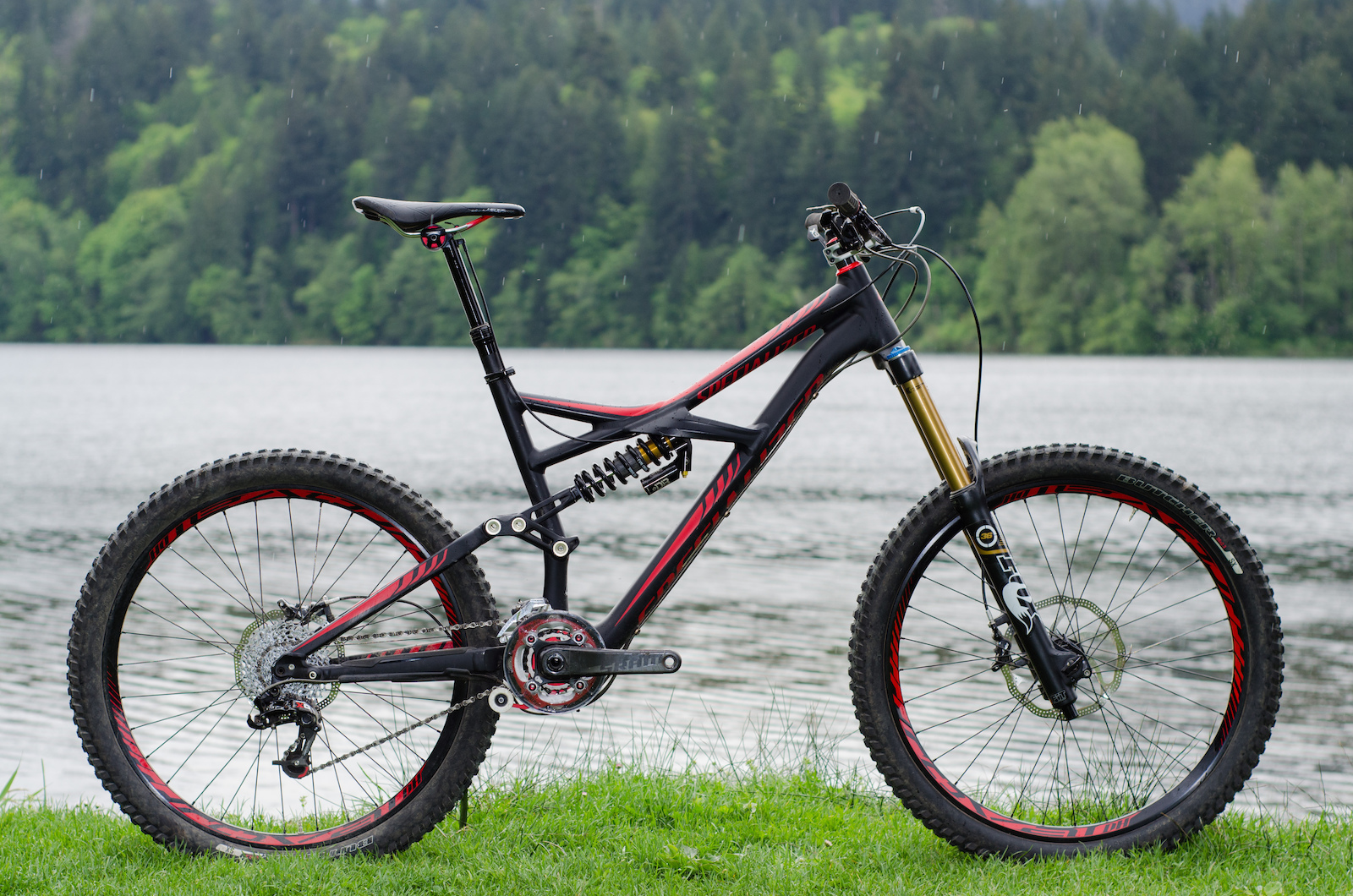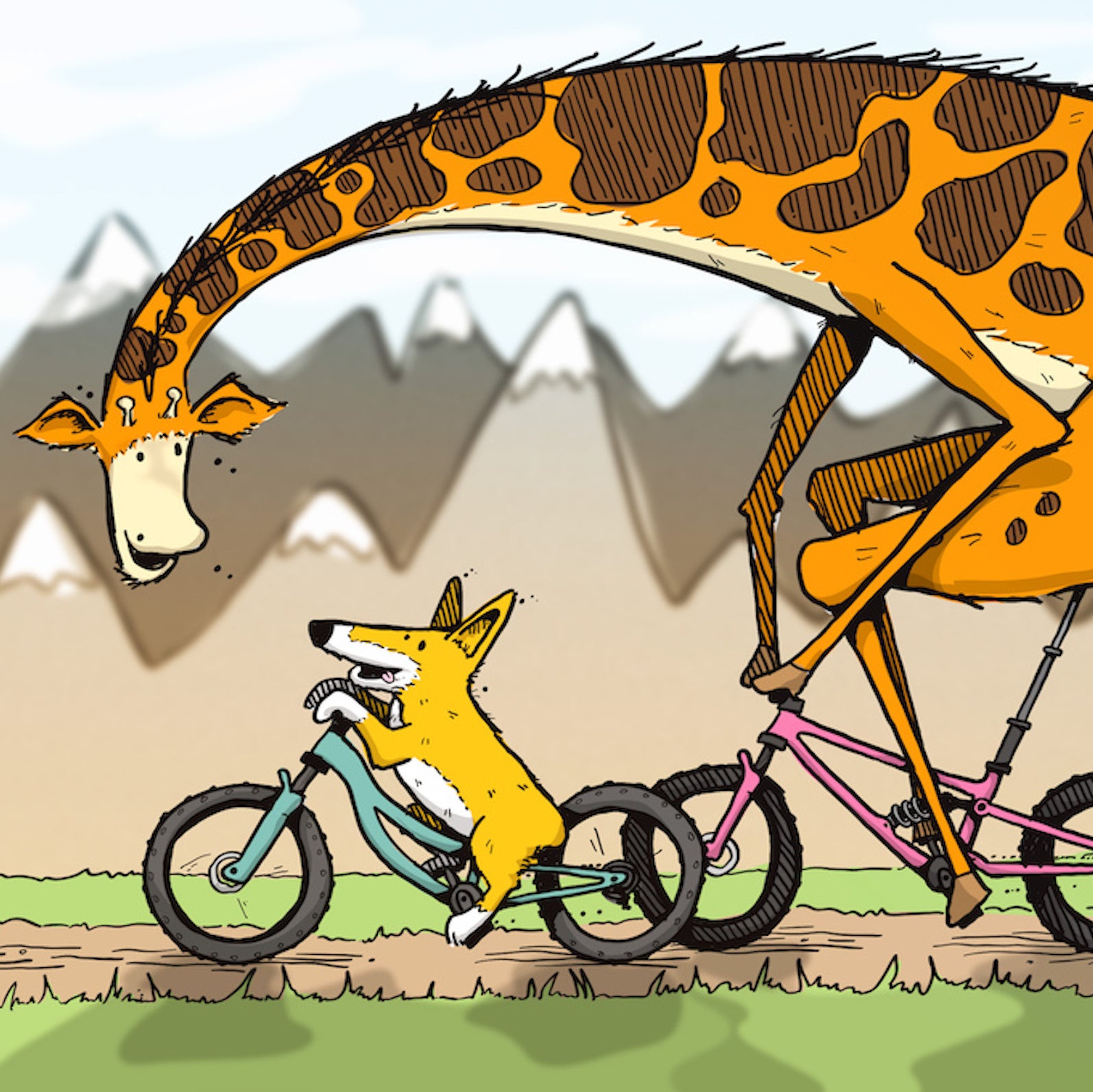Picking the right frame size is one of the most important decisions you’ll make when buying a new bike. The frame size affects the comfort, agility, stability, and all-around handling of the rig—arguably more so than the differences between two comparable models from competing brands. Here’s some advice that’s been repeated a thousand times, because it’s true: don’t be tempted by a great deal on a bike that’s not the ideal size.

Check the Size Charts
So how do you pick the right size? Luckily, these days it’s usually incredibly straightforward. Go to the website of the bike you’re looking to buy, click on the geometry/sizing section and check which size the manufacturer recommends for your height. That’s it. It may sound too easy, but manufacturers are at the point where these sizing recommendations are a good guide for most people.
But there are two potential problems with this: what if you’re on the border between two size recommendations on the manufacturer’s chart? And what about older, secondhand bikes?
What to Do If You’re Between Sizes
If your height puts you in between two sizes, there’s a judgment call to be made. You should be able to ride either without any problems, but in general, sizing down will give you a more lively ride that will suit tighter terrain, lower speeds, and a more playful riding style; sizing up will offer more stability, with less chance of pitching forwards when braking or riding over bumps, which suits faster, rougher terrain or a “to the point” riding style.
In the video above, I compare two sizes of the same bike in terms of ride feel and speed against the clock. For me, there was no real difference in how fast I could ride. It’s surprisingly easy to adapt to either, but one thing I noticed is that the bigger size felt better once I knew the track and was up to speed. So if you usually ride trails that you know well, that may tip the balance towards sizing up, whereas if you’re often exploring new trails, the agility of a smaller size might make more sense.
Ultimately, the best solution is to try out both sizes and see which you prefer. If that’s not possible, then trying out a range of similar bikes can help. When you find a bike that fits you nicely, make a note of the reach number—that’s the horizontal distance between the top of the head tube and an imaginary vertical line drawn through the bottom bracket—which is usually found on the manufacturer’s website. While not perfect, it’s the best single number for gauging how long a bike will feel when riding. Once you get a feel for how much reach you like, you can apply this knowledge to your bike of choice.

Note that reach is purely a measurement of the frame—it doesn’t take into account the length of the stem, the rise of the handlebars, or the number of spacers under the stem. All of these will affect how big the bike feels to ride, so make sure the bikes you’re riding have the same stem length as what you would run on the bike you’re intending to buy, as well as a that’s appropriate for you.

How to Choose Sizes on Older Bikes
If you’re shopping for an older bike—by which I mean one made before about 2015—the advice above doesn’t necessarily apply.
In the early days of mountain biking, sizing was almost entirely based on the seat tube length, or the distance from the bottom bracket to the top of the seat clamp (usually measured in inches). Taller riders needed a taller frame in order to get their saddle high enough and shorter riders needed a shorter frame in order to get the seat low enough, but the horizontal length of the bike (which is critical for stability and handling) was almost an afterthought and barely changed between the smallest and largest sizes.
Throughout the history of mountain biking, this gradually shifted to the point where now, long- and travel-adjustable dropper seatposts make it possible for most riders to fit on a range of sizes without worrying about the seat tube length at all. But if you’re looking at buying an older bike, most experts would now agree that the reach and wheelbase are going to be on the short side (especially for taller riders), making for handling that would be more fairly described as “sketchy” or “terrifying” rather than “agile” or “fun.”
So in this case, it’s usually worth sizing up if you can. For example, at 191 centimeters or six-foot, three inches tall, I’m choosing an XL or large with modern bikes, but with bikes from a few years ago I’d be looking for an XL or XXL. The limiting factor for sizing up is usually the seat tube length—this is because older bikes have long seat tubes and short reach numbers. A long seat tube can make it difficult to install a dropper post that goes down far enough to be effective.
To work out if the seat tube is too long, use a bike where the saddle height is at the right height for pedaling, then measure the distance from the saddle rails to the center of the bottom bracket. If you don’t know what your ideal saddle height should be, a visit to your local bike shop may be in order. In general, though, the goal is to have your knee slightly bent at the bottom of the pedal stroke, when the pedals are at the 6 and 12 o’clock positions.
Once you know your ideal seat height, subtract the seat tube length of the bike you’re thinking of getting; the number you’re left with is the “collar-to-saddle rails distance”, which is the room that’s left for a dropper post. You can then plug this number into to find out what’s the longest dropper post that will fit.
These days, dropper posts are considered a must-have for mountain biking – they make it easy to get the saddle out of the way for descending without needing to dismount and lower the seat manually. How much drop you need will vary depending on a bike’s geometry and the rider’s height, but in general, on older bikes you’ll want to be able to fit a post with 125 mm of travel at the bare minimum; 150 mm or more will be even better, especially for taller riders, if the seat tube length will allow it.
Every spring there is an influx of riders keen to get into mountain biking, and at Pinkbike and �����ԹϺ���, we know that these newcomers are often overwhelmed with information and opinions. So, we’re launching a seven-part series called MTB Explained, where we help new riders navigate some of the basics of our sport. If you’re new, welcome to the best damn sport in the world, and if you’re a long-time rider let’s welcome these folks to the club.


